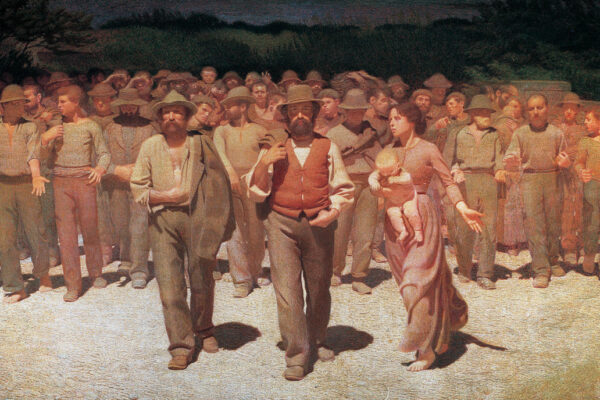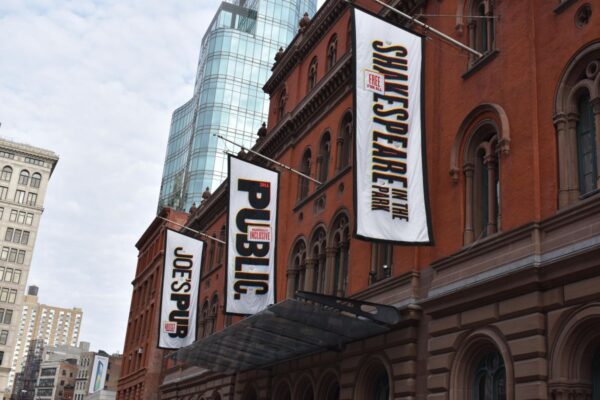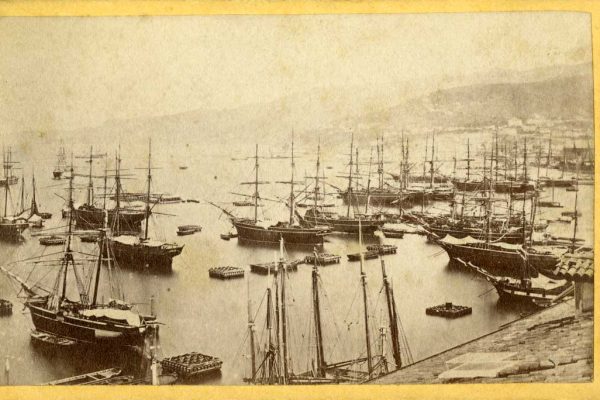Olivia Fermi, has been involved with the legacy her grandparents Laura Capon Fermi and Enrico Fermi, through the creative and educational initiative, Neutron Trail. A psychological and spiritual counsellor with 25 years of experience, she lives and works in Vancouver, Canada.
“Put your grandmother Laura first, ahead of Enrico,” I can still hear my mother urging me. These were not exactly Nella Fermi Weiner’s last words, but she said them to me emphatically in the years before her rather early death. If you have lost a parent, you may know what it is like to grapple with some advice of theirs that won’t fade and yet doesn’t entirely add up.
What was Nella trying to tell me? My grandfather was the genius, the stellar one, the one I never met. I had grown up with my grandmother nearby and was used to her. She remained in Enrico Fermi’s shadow or, more properly, in his glow. It was a glow that filled my field of vision, obscuring — what? Nella’s words challenged my assumptions. Herein is much of what I learned from considering my grandmother Laura Fermi’s life and work in light of my mother’s instructions.
Laura Fermi wrote her first book in English, Atoms in the Family, a language she had adopted after she, Enrico and the children fled Nazi-allied Italy for the United States in 1939. In Atoms in the Family, Laura reveals her husband Enrico’s human side with humor and grace, at the same time gives us a glimpse into his genius and what it was like to live with him during both political upheaval and calm. But physicist’s wives don’t write memoirs about their husbands. Who was my grandmother that she could pull this off?
There are clues in her life story. Born in 1907, Laura Capon came from a family of upper-middle-class Italian Jews. They were living in Rome when Benito Mussolini came to power in 1922; and when she and Enrico married in 1928. Laura, who had been studying science, enjoyed following her husband’s work and related breakthroughs in physics. She helped my grandfather write his first textbook. Five years of forced wartime secrecy from 1940–1945 temporarily broke the flow of discourse between them. She shared more about those details in Atoms in the Family, but my grandmother doesn’t mention how Hitler’s Holocaust robbed her of her father Augusto Capon, an admiral in the Italian Navy. Because of his position, my great-grandfather didn’t believe he was in danger, even when the situation under Mussolini continued to deteriorate. The elderly Admiral Capon refused an offer from Enrico’s older sister Maria to take shelter at her home outside of Rome along with some other Jews.
On October 16, 1943, with Mussolini’s support, the Nazis entered Rome and gathered up over a thousand Italian Jews, put them on trains and took them to Auschwitz. Approximately eight hundred, including Laura’s father, were gassed a week later on October 23. About two hundred others were put in a detention camp. At this devastating news, Laura could have sunk into the melancholy that had had gripped her younger sister Paola during and after the War. But, perhaps in part because Enrico had already exposed her to the possibility of exerting influence beyond one’s immediate family, she bore the loss and forged ahead.
Repeatedly, global politics intruded into my grandmother’s personal life and shaped her thinking about how to influence society. A pivotal moment for Laura was at War’s end, when Enrico was allowed to reopen the scientific conversation between them. As she made her way through the Smyth Report’s declassified and highly technical material about her husband and the scientists’ work on the first atomic bombs, she realized, she now had to come to terms with the social implications of nuclear weapons. In her 1975 lecture, later published in the collection Reminiscences of Los Alamos (1980, edited by Badash, et al), she summarized the ethical dilemmas in a query:
“But above all, there were the moral questions. I knew scientists had hoped that the bomb would not be possible, but there it was and it had already killed and destroyed so much. Was war or science to be blamed? Should the scientists have stopped the work once they realized that a bomb was feasible? Could they have stopped it? Would there always be war in the future? To these kinds of questions there is no simple answer.”
Given my grandmother’s character, intelligence and developing vision; and in the context of all that she witnessed, Laura’s publication of Atoms in the Family seems a natural evolution. The book’s appearance in 1954 coincided with Enrico’s diagnosis of stomach cancer. He lasted until the end of November, long enough to see his wife’s book hit The New York Times bestseller list. After Enrico’s death and the success of Atoms in the Family, Laura’s talent and courage continued to emerge, as she transformed herself from a quiet housewife into an author and pioneering activist.
In 1955, Laura accepted an invitation to be the official U.S. historian for the firstInternational Conference on the Peaceful Uses of Atomic Energy held in Geneva, Switzerland. She made full use of her knack for observing social dynamics, her friendly relationships with many of the world’s best known physicists, and her ability to convey difficult technical aspects of cutting edge physics to lay readers. Her account of the conference was published in the 1957 book Atoms for the World.
That book recounts personal and scientific details of the delegates’ interactions and provides historical context for the conference. It describes how Russian and US scientists, cleared by their respective governments to openly share information with each other for the duration of the conference, quickly established warm and often enthusiastic technical exchanges. These exchanges were a tangible display of a shared belief among scientists, a belief her husband Enrico had championed, in the power of open science to nurture healthy relations between nations.
Laura did not shy away from analyzing the painful years in Italian history. In 1961, my grandmother published a biography of Benito Mussolini. Reviewing it in the New York Times, historian Mack Smith acclaimed it as an incisive psychological portrait and, like many before and since, singled out Fermi’s “always level-headed tone” for praise. In addition to Mussolini, with physicist Gilberto Bernardini, she wrote a biography, also published in 1961, about Galileo Galilei, beloved father of Western science. During this period my grandmother challenged herself to look at both the dark and the light sides of her Italian heritage. 1961 was a prolific year for Laura Fermi. She also published a work for young people called The Story of Atomic Energy. For that book, Laura hired a ten-year-old consultant to tell her what worked and what didn’t; for each chapter he discussed with her, she paid him $1.00 and gave him lunch. Perhaps more importantly, my grandmother credited the young man with changing how she formulated the opening of the book.
But Laura didn’t just write books. After the war, my family had settled in Chicago, in the neighborhood surrounding the University of Chicago. Even as late as the mid–twentieth century, buildings were heated with coal. Trucks would leave piles of it on the sidewalk for owners to use in their furnaces. Windows sills, laundry drying on the line — everything was quickly covered in soot. Laura and a group of her female friends became environmental pioneers when they decided to voice their concerns about the negative effects of coal as a fuel. In 1959 they formed the Cleaner Air Committee of Hyde Park and Kenwood (CAC) (this was three years before the biologist Rachel Carson published Silent Spring, the culture-wide wake-up call about our complex and inadvertently harmful impact on the environment). The CAC overcame initial hostility to their cause and were successful on a number of fronts. The University of Chicago switched from coal to gas, and the committee facilitated the passage of local and national cleaner air statutes.
The CAC used a primitive kind of crowdsourcing to engage citizens as watchdogs. The Ringelmann Smoke Chart was a pentagonal wheel with five shades from light grey to black around a cut-out in the center. If you saw smoke, you would hold the chart so you could view it through the cut-out and match its darkness to the corresponding shade of grey on the wheel. There was a hotline you could phone to report any infractions.
With the Ringelmann chart, my memories kick in. I was five or six and noticing my elders’ concerns about air pollution and above–ground nuclear testing, as well as their admiration for Enrico. My father explained to me that wind currents carried radioactive fallout from nuclear tests up into the atmosphere. The clouds absorbed the fallout and released toxic rain. He told me that everyone was worried about kids’ bone development being harmed if they drank milk from cows that had eaten fallout-tainted grass. I was too young to understand ethical dilemmas, but was confused about my grandfather’s genius and whatever association he had with these troubles.
By this point, my grandmother was so busy with her various projects that she didn’t reminisce much about my grandfather with me or my younger brother. My sense of Enrico was vague and far–reaching. It was only as an adult that I realized my mixed feelings about his legacy were not unusual. “The birth certificate of the atomic era” – that was how my grandmother referred to a plaque at the University of Chicago that marked the spot where, on December 2, 1942, Enrico and his team created the first self-sustaining nuclear chain reaction. She was not alone in recognizing the significance of that spot. For a twenty-five-year commemoration ceremony of it in 1967, the University commissioned sculptor Henry Moore to create a sculpture he called Nuclear Energy.
Moore explained the sculpture’s visual symbolism and the significance of Fermi’s experiment in a 1973 “Art Journal” interview:
“By being successful [at his experiment] Man was able to control this huge force for peaceful purposes as well as destructive ones. …The top of it is like some large mushroom, or a kind of mushroom cloud. Also it has a kind of head shape like the top to the skull but down below is more an architectural cathedral. One might think of the lower part of it being protective form and constructed for human beings and the top being more like the idea of the destructive side to the atom. So between the two, it might express to people, in a symbolic way, the whole event.”
My grandmother, along with the head of the Atomic Energy Commission, was given the honor of unveiling the piece. Afterwards, someone from the press asked Laura what she thought of the sculpture. My grandmother politely replied, “No comment.” In an article published three years later, she explained that she was concerned that people were confusing atomic energy, which began with the Chicago Pile-1 experiment, with the birth of atomic weapons, which began with Trinity, and she felt that Moore’s sculpture, with its mushroom cloud symbolism, reinforced that confusion.
In 1968, my grandmother produced her final book, Illustrious Immigrants. In it she catalogs the remarkable migration of intellectual and professional talent out of war–torn Europe between 1930 and 1941. This book demonstrates her skill at highlighting and analyzing important social trends which had also shaped the course of her own life. Meanwhile, Laura continued her work with the Cleaner Air Committee, which included educating hundreds of CAC volunteers and the general public about the dangers of air pollution. The CAC was the first citizen’s group to testify before the U.S. Senate, when they appeared at sub–committee hearings on Air & Water Pollution Control in 1962.
As cultural awareness grew and the air in Chicago became measurably cleaner, my grandmother and her friends became increasingly concerned about a new issue: gun violence in Chicago. In 1971, Laura founded the first ever handgun control lobby in America, the Civic Disarmament Committee for Handgun Control (CDC). Under Laura’s leadership, she and her CDC colleagues inspired and nurtured the first national campaign for gun control, which later evolved into the Brady Campaign.
In 1977, at the age of seventy, my grandmother died of respiratory failure. The Civic Disarmament Committee acknowledged her remarkable commitment during her later years:
“So great was Laura’s devotion to CDC that when eye problems and diminishing energy forced her to choose between continuing to work on [a new] book… and CDC, she chose to devote herself to handgun control. This choice points up the fact that Laura was above all else a good citizen. When she identified a problem she went to work on it. Laura was central to our cause.”
Some of my strongest memories of my grandmother are of her dignity in the face of her disability. For years, suffering from pulmonary fibrosis, she could only walk, at most, within a couple of blocks of her apartment. Yet I don’t remember her ever complaining. She simply made a full and rewarding life out of what was left to her. In her conversations with me, Laura connected the personal to the societal with clarity and forcefulness. From the time I was seven years old, she exhorted me to write, giving me leather–bound journals and earnestly explaining to me that the pen is mightier than the sword.
What thoughtful person doesn’t have conflicting feelings about the choices and trade–offs we make in society, for comfort, pleasure or perceived security? What did Laura do about her feelings? With intelligence, dignity and courage, she investigated them, voiced them publically, and took direct social action. A key message of her life was that in truly exercising democracy one engages with the world in meaningful ways. I think this at the heart of why my mom said to put my grandmother first: she didn’t have an extraordinary gift as did my grandfather. Laura was like any of us can be — an ordinary genius.









